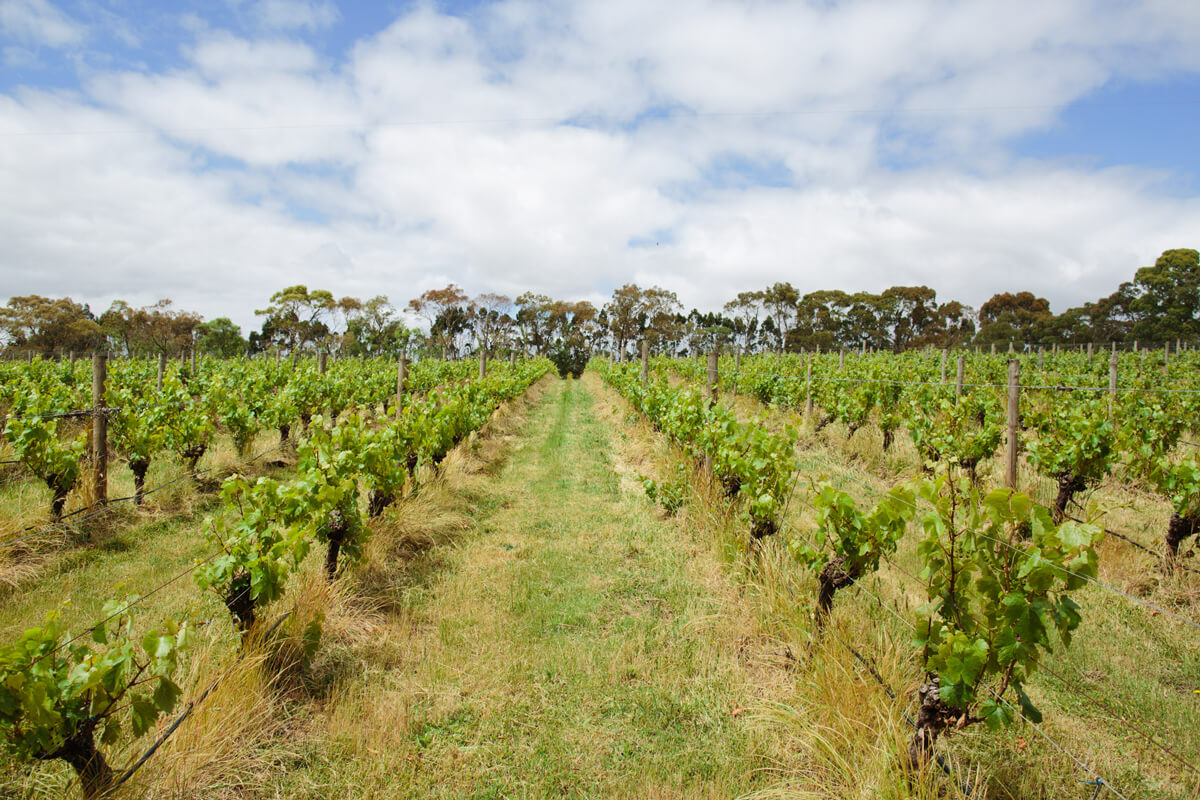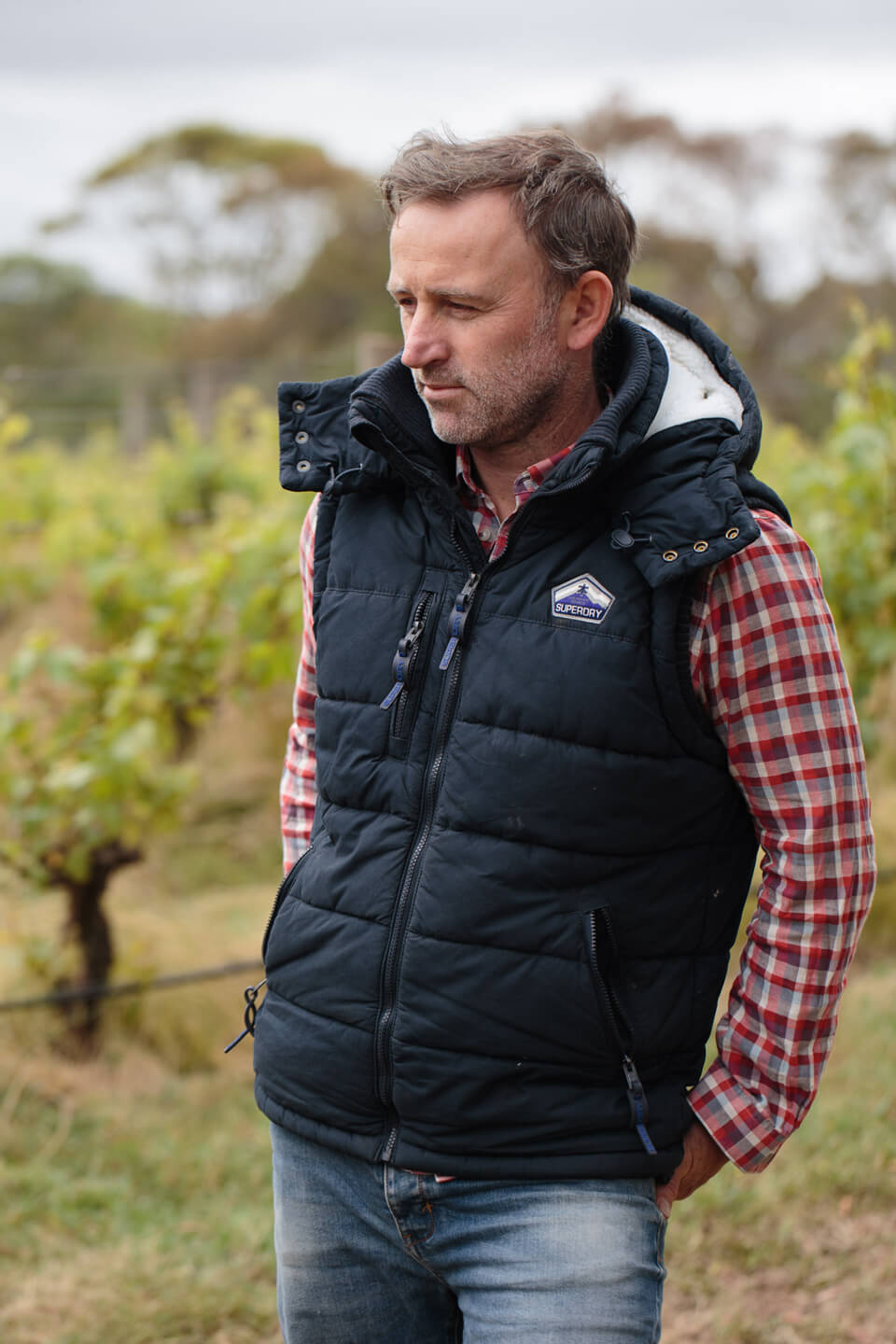Styling Chardonnay at Ocean Eight
Mike Aylward from Mornington Peninsula’s Ocean Eight was one of the pioneers of a fresher chardonnay style, unencumbered with overt winemaking tricks.
Melbourne is well served with top wine regions, with the Yarra, Mornington, Geelong and Macedon all about an hour from the city. All are cool climate, but Macedon takes the prize for being the coolest, with some touting it as the best territory for chardonnay and pinot noir in the country. Evidence of that potential, aside from some glittering exceptions, haven’t exactly been crowding wine store shelves over the years, but much has changed, and there’s a dynamic community ensuring that potential is being tapped in exciting ways. There are no better examples of this than Lyons Will, Wilimee and Dilworth & Allain, who all made the 2020 Young Gun Top 50.
Macedon, or rather the Macedon Ranges, is positively cold. Wine Australia range it between “extremely cold” and “very cold”, calling it Australia’s coldest mainland region. How cold depends on elevation. Vineyards at 300 metres are naturally milder than those at 800 metres, while some genuine masochists who planted closer to 1000 metres fall into the extremely cold camp.
In general, those toward the north, as the region peters out and Heathcote comes into play, are warmer, and those more southerly catch more of the chill. Pinot noir and chardonnay reign supreme across the region, accounting for over 70 per cent of the grapes grown.
The region was planted back in the 19th century but, like most Victorian wine zones, went into decline in the early 20th century. Plantings began again in the 60s, with a specialisation in sparkling wine developing in the 80s and 90s. Most of that fruit is now destined for still wine, which mirrors the sparkling vineyards in the Yarra that are premier still-wine sites today. Changing tastes? Maturing vines? Warming climate? Probably a combination.
Chardonnay vines planted in 1982 at what is now Wilimee vineyard in Macedon Ranges. Photograph: James Morgan.
Macedon’s reputation was built on a handful of extraordinary exemplars, like Curly Flat, Granite Hills and Bindi, as much as it was on raw potential. The wines being made by less-known growers typically weren’t hitting the heights of those top makers, but the fruit was of undoubtedly high class. Today, that resource of quality raw material has become a boon for those both sourcing grapes and buying into the region.
After looking at sites in Mornington and the Yarra, Renata Morello and Ollie Rapson of Lyons Will turned their attention to Macedon. “When we started looking in the Macedon Ranges, there were older established vineyards, but they hadn’t really established anything else,” Morello says. “They had a little label but were selling most of their grapes. It made it affordable. We weren’t buying a business; we were just buying a vineyard.”
But today’s Macedon isn’t a story of the new guard usurping the old, rather it is one of co-operation. “One of the things I love about our region is that it’s really collaborative,” says Morello. “The old guard are excited by the new kids on the block, which is really nice. Lew Knight [of Granite Hills (planted 1971)] has been amazing. He’s been more than happy to talk through stuff from viticulture to winemaking.”
Ben Ranken, of Wilimee, bought the old Portree Vineyard in 2013, which was first planted 1983. “There are about half a dozen of us who have bought in the last five or six years, and there are a few guys buying fruit from some nice vineyards as well,” Ranken says, mentioning Joshua Cooper and Dilworth & Allain, amongst others – while Top 50 maker Chris Catlow of Sentiō comes from outside the region to craft a Macedon chardonnay. But he also notes some of the older wineries have seen generational evolution, with styles tweaked as daughters and sons take on the winemaking mantle.
Ben Ranken in his Wilimee vineyard. Photograph: James Morgan.
Ranken partly credits the new wave with helping to inspire those with established vineyards that had yet to build a strong brand. “They’ve helped improve what some of the other guys were doing,” he says. “We did a tasting of everyone’s red barrels last year, say 30–35 of us, and we didn’t see a bad wine. They’re utilising more wild ferments and a bit of whole bunch, which they wouldn’t have dared doing 10 years ago. It’s been really refreshing to see. They were all really delicious – good little pinots.”
Ranken see pinot noir as certainly the leading red variety, believing that many of the cabernet vines can be marginal, and that shiraz hasn’t yet reached its full potential. “The hard one in Macedon for reds is getting ripe tannins. Cobaw Ridge does a lovely shiraz, but there aren’t many expressions that are befitting high-end shiraz. Gamay’s got a big future, though.”
At Lyons Will, Morello has made a deep investment with Gamay, with more planted, and more to come. They have also planted a small block for six or seven gamay clones in collaboration with a vine nursery to use as source material. Gamay has also gone in at several other vineyards, but most has yet to make it to bottle.
Gamay grapes on vines at Lyons Will Estate.
Ranken also makes the wine at Mount Monument, and he’s currently planning a new vineyard block. “I’m trying to convince the boss to plant nebbiolo,” he says. They are also planting more riesling, and Ranken believes the variety could be a leading white variety alongside chardonnay. “Riesling goes under the radar, and there are some bloody good rieslings in the region,” he says, citing Granite Hills as a leader.
Morello is similarly bullish about riesling’s future. “There’s some really awesome riesling coming out of our region, but there’s just not much of it yet. We don’t have the issue many other Australian regions have in retaining acid, which is super exciting.”
Morello has also seen the region evolve in other ways. With more people – and quite a few more professionals – moving to the area, there has been an increase in the quality of the hospitality and retail offer. “All of a sudden, restaurants are here, and we’ve got better bottle shops and better access.”
Owen and Jen Latta from Eastern Peake (in Coghills Creek) run Wine and the Country wine bar/store in Daylesford, which is a prime example of this development. They carry a selection of all that’s good in the region and surrounds, as well as a mesmerising selection of some of the world’s rarest wines, with a ‘natural’ and artisanal slant. And this interest in the ever-evolving world of wine has proved infectious.
Wine and the Country in Daylesford has brought a mesmerising selection of some of the world’s rarest wines to the Macedon wine folk.
“We’re getting together in groups now to have benchmarking tastings, not just with our own wines, but with others as well, which wasn’t done when we first moved up here. It’s really positive,” says Ranken.
Macedon is evolving rapidly, and in myriad ways. The long-held faith in its potential as a great region for pinot noir and chardonnay has been unarguably validated, and with the desire to explore new territory and enhance the region with a collaborative spirit, it’s impossible to imagine that it won’t achieve ever greater heights.
“There’s a lot of energy up here, which is great. Good people with good energy and a great community,” says Ranken.

There’s real depth of flavour and fruit here, refined but far from lean or shy. There’s a flush of citrus, white and some yellow stone fruit, with orchard blossoms, a mild note of creamed honey in the background and a savoury brush of oak. The fruit and gentle chew of texture is buffered by leesy texture and fruit concentration. The acid is super pure and resolved, with lovely brightness but no tartness. Impeccable balance, and classic chardonnay feel but with no artefact or fat, nor overt leanness – poised.
This is brooding yet coolly elegant, with sour red plums, cherries, wild sour-edged berries, earthy tones, dried herbs and a dusting of whole-bunch spice. There’s plenty of fruit intensity and drive to this but rendered in a fine way, with finely pitched tannins and creeping acidity; a touch of cold campfire and autumn leaves on the finish. There’s a sour-fruit-laced race to this over time in glass, with real structural tension of acid and a fine web of tannin suspending the fruit through a sustained finish.
Lifted nose of lemon, lime pith, blossom and waxy orchard fruits, with a savoury stone fruit kernel note coming through. Lemon curd, beeswax and a hint of sour pineapple come with time in glass. There are some lightly creamy notes and a sense of barrel raising, but the fruit wins the day, for sure. There’s a little sugar in this, but it gives the wine ballast against the piercing acidity, rather than adding actual sweetness, just necessary harmony and weight.
This is super bright and lifted with sour cherry, plum skin, forest berries, mint and Christmas spice. It’s quite fine through the palate, sinewy with very bright acid, but it all makes sense as there’s an underlying richness and intensity here too. The flavour unfurls with time in the glass, revealing complex layers of sour-edged wild fruits, smoky spice and fragrant florals. That tension in the palate holds, but you can see it unlocking in interesting ways with more time in bottle.
This has a real lift of flavour, with cool yellow fruits and flashes of citrus peel, grapefruit pith and a chalky crushed rock note. There’s oak here, but it’s super harmonious, with flashes of nutty charriness, but no intrusion as such – it’s very complementary. There’s a brush of grape tannin and a racy acid profile, though it’s not piercing. It finishes moreish, without relying on acidity solely, but rather with a distinctly drying mineral feel that adds great complexity to the structure, adding real interest.
There’s intensity and ample flavour here, with stone fruit at the fore, though this isn’t fruity per se, with plenty of savoury character, too. There’s white nectarine, sometimes dipping to yellow, white peach, grapefruit pith, flashes of nougat and a mint note, a bit like you sometimes see in Mosel riesling. The palate has remarkably zippy acidity but a real plump of texture, with chew and texture aplenty. There’s classic chardonnay winemaking here, but rather than being overt or sleekly modern, this is deeply characterful but with great balance and a sense of place.
Brooding and darkly cast. This starts with such a dark and deep colour, and then proceeds into a nose full of spiced dried plum, leather and an anise-edged, amaro-like vibe. There’s oak here to match the fruit intensity, but all is in balance. This has the feel of a distinct site perhaps with small berries adding an extra dose of tannin and concentration. That’s how it feels anyway, with plenty of fruit concentration and flavour bound with savoury structure. A truly individual wine of power and presence that needs time to unlock its ample mysteries.
Please sign in or create account as candidate to bookmark this job
Please sign in or create account to save this search

Please sign in or create account as candidate to create a resume



